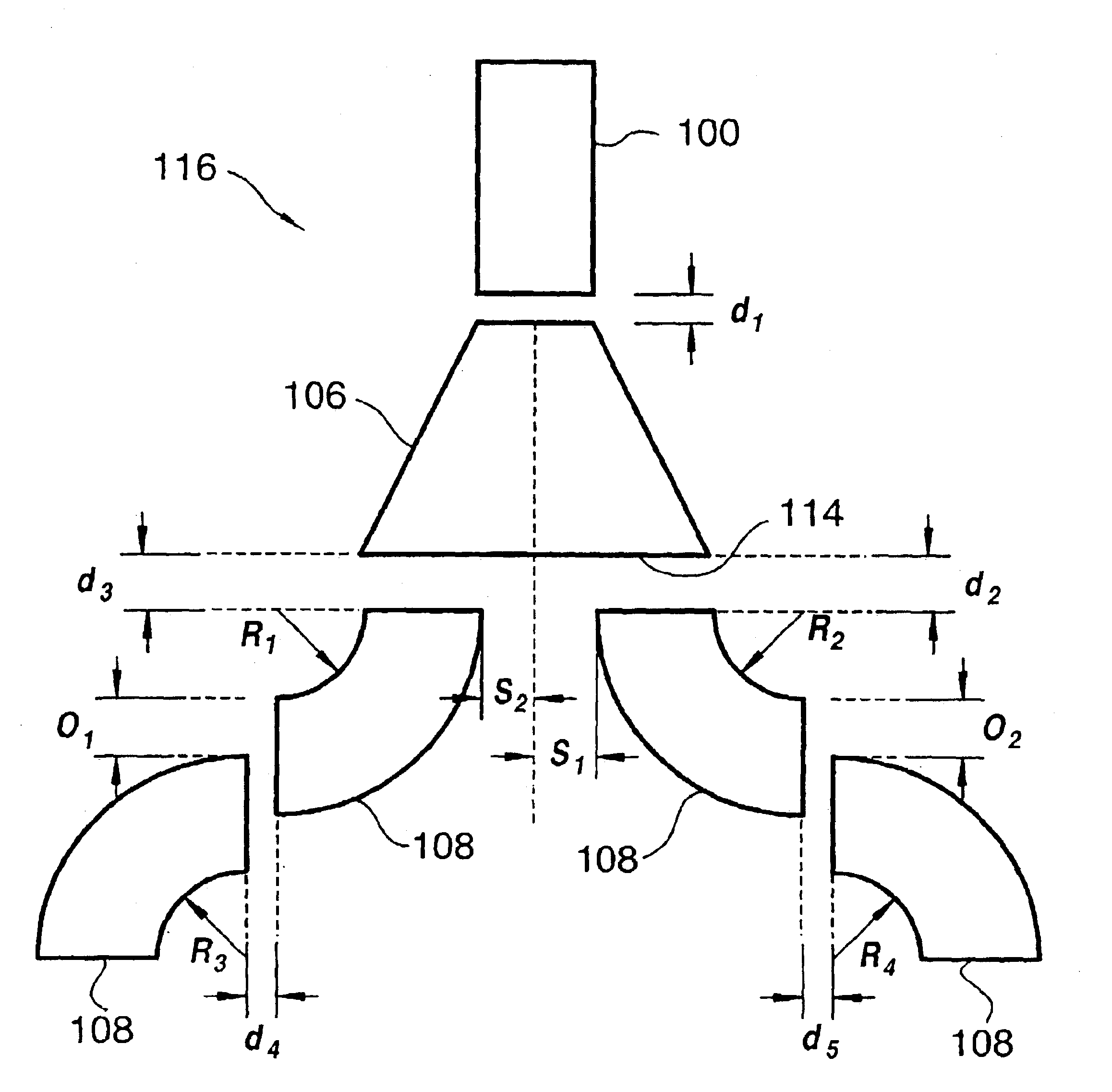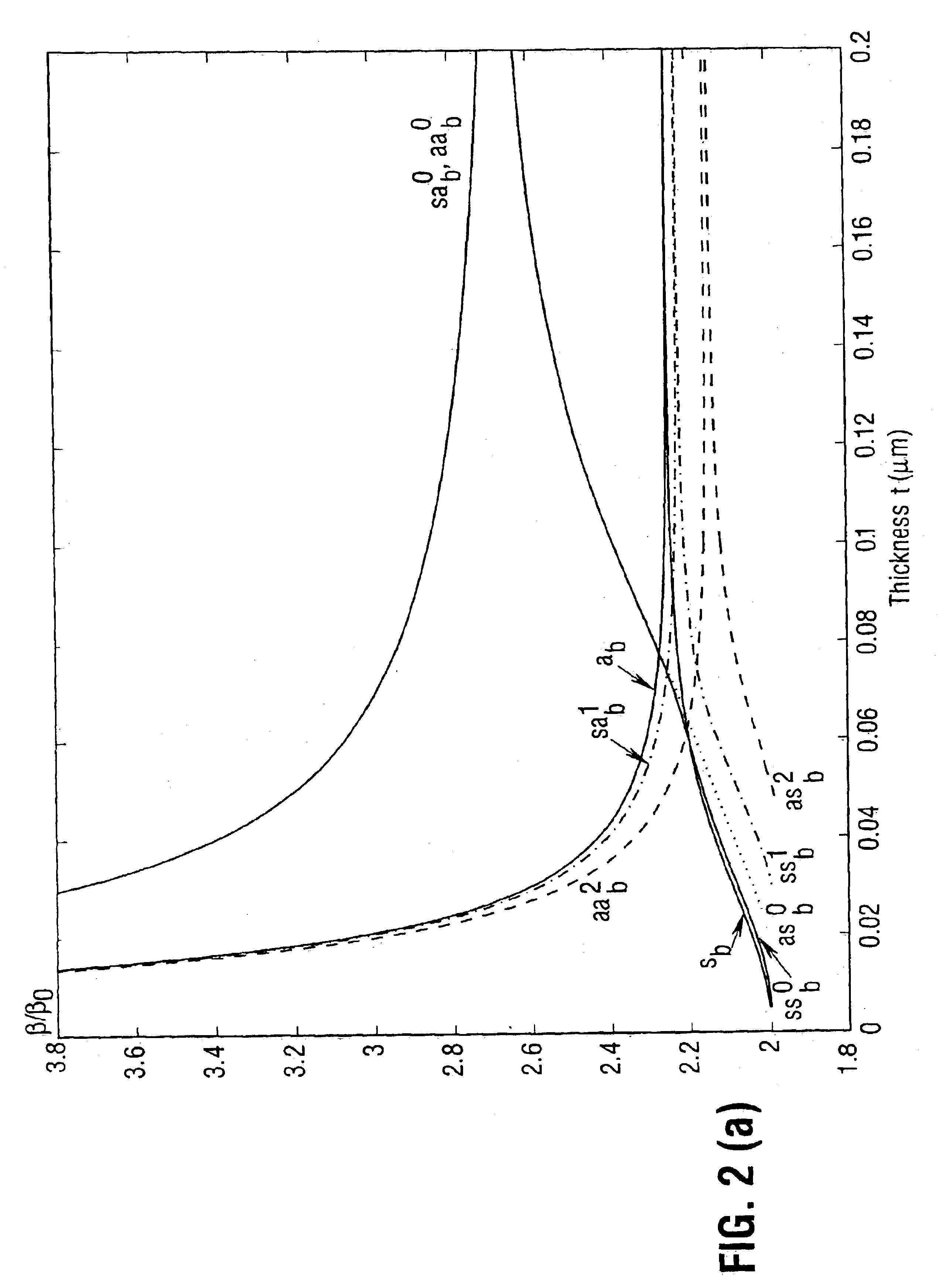Optical waveguide structures
a waveguide and optical technology, applied in the field of optical devices, can solve the problems of limited practical interest for lossy plasmon-polariton waves guided by metal-dielectric interfaces, and infinitely wide metal film structures
- Summary
- Abstract
- Description
- Claims
- Application Information
AI Technical Summary
Benefits of technology
Problems solved by technology
Method used
Image
Examples
Embodiment Construction
OF APPLICATION
Examples of practical waveguide structures, and integrated optics devices which can be implemented using the invention, will now be described with reference also to FIGS. 27 to 42, 51 and 52. Unless otherwise stated, where a waveguide structure is shown, it will have a general construction similar to that shown in FIGS. 1(a) and 1(b) or that shown in FIGS. 17(a) and 17(b).
Waveguides, structures and devices disclosed herein operate with radiation:
having a wavelength such that a plasmon-polariton wave is supported;
at optical wavelengths;
at optical communications wavelengths;
at wavelengths in the range of 800 nm to 2 .mu.m;
at wavelengths near 1550 nm;
at wavelengths near 1310 nm;
at wavelengths near 850 nm;
at wavelengths near 980 nm.
It should be appreciated that references to wavelength should be interpreted as meaning the centre free space wavelength of the spectrum associated with the input radiation.
The waveguide structure 100 shown in FIGS. 1(a) and 1(b) comprises a str...
PUM
| Property | Measurement | Unit |
|---|---|---|
| length | aaaaa | aaaaa |
| thickness | aaaaa | aaaaa |
| thickness | aaaaa | aaaaa |
Abstract
Description
Claims
Application Information
 Login to View More
Login to View More - R&D
- Intellectual Property
- Life Sciences
- Materials
- Tech Scout
- Unparalleled Data Quality
- Higher Quality Content
- 60% Fewer Hallucinations
Browse by: Latest US Patents, China's latest patents, Technical Efficacy Thesaurus, Application Domain, Technology Topic, Popular Technical Reports.
© 2025 PatSnap. All rights reserved.Legal|Privacy policy|Modern Slavery Act Transparency Statement|Sitemap|About US| Contact US: help@patsnap.com



